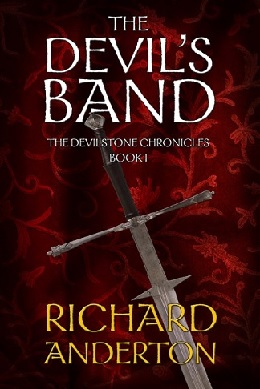
Detail from The Battle of Pavia painted c.1525 by an unknown Flemish artist and now in Oxford's Ashmolean Museum . The caption (ringed in red) reads "Duc de Svffoc dit Blanche Rose" - The Duke of Suffolk also called White Rose.
THE LAST FLOWERING OF THE WHITE ROSE – What became of Richard III’s heirs: John, Edmund, William and Richard de la Pole?
When his only legitimate son died in 1484, Richard III chose his nephews, John de la Pole 1st Earl of Lincoln and his three brothers, Edmund, William and Richard, to be his heirs and though John made his peace with Henry VII after the Yorkists’ defeat at Bosworth, two years later he joined the conspiracy to replace the Tudor king with the impostor Lambert Simnel.
In 1487 John landed in Lancashire with an army of German and Irish mercenaries but his rebellion was crushed at the Battle of Stoke Field. John de la Pole died in the fighting but the mantle of the White Rose passed to his brother Edmund.
Edmund adopted the de la Poles’ ancestral title of Duke of Suffolk and fled England to seek support for his cause from the Holy Roman Emperor Maximilian.
Unfortunately Edmund's plans were destroyed by a storm. Maximilian’s son, Philip of Burgundy (the future brother-in-law of Catherine of Aragon) was shipwrecked in England whereupon Henry VII demanded that the emperor hand over Edmund in exchange for Philip’s release. Edmund was duly sent to London, on the condition he wouldn’t be harmed, but after spending seven years in The Tower he was executed by the new king Henry VIII.
Edmund was not the only de la Pole to be imprisoned by the Tudors. William, a third brother who seemed to have played little part in any of the de la Pole conspiracies, was sent to the tower in 1502 where he died, after 37 years in captivity, in 1539. The fourth de la Pole, Richard, managed to escape to France and on the execution of his brother Edmund, he adopted the title Duke of Suffolk.
In 1514 Richard persuaded the French King Louis XII to back a new Yorkist invasion but once again the weather frustrated his cause. Contrary winds kept Richard’s fleet at St Malo and during this time Louis made peace with the Tudors. A condition of the treaty was that all Yorkist rebels should be expelled from France so Richard was banished to Metz. For the next 10 years Richard pestered Louis, and his successor Francis I, to renew their war with the Tudors and 1523 he got his wish.
Though Francis insisted that Richard make common cause with the exiled Scottish prince John Stewart Duke of Albany, who had his own quarrel with the Tudors, he gave Richard the money for his invasion but this time a renewal of the war the Hapsburg Holy Roman Empire, France’s hereditary enemy, thwarted all their ambitions.
An invasion of Provence by an imperial army forced Francis to send every available man south. Both Richard and Albany joined Francis’ attack on Hapsburg Italy and the war culminated in the pivotal battle of Pavia. Richard, who’d been placed in command of the renegade mercenaries known as the Black Legion, was in the thick of the fighting and his fate is recorded in a contemporary painting of the battle as well as in the final chapters of The Devil’s Band.
